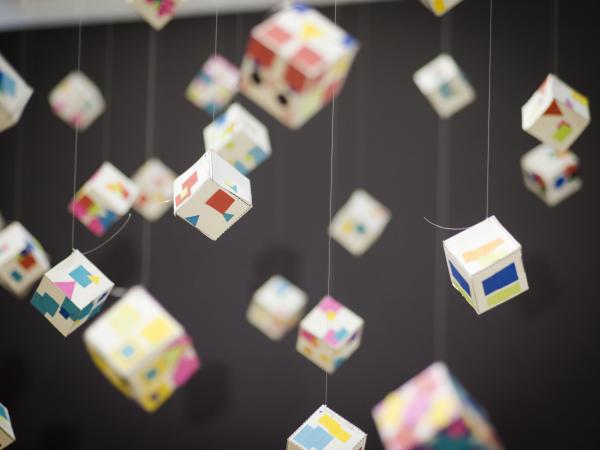Day 1 – Introduction
Introduce the project with a slide show
- Describe how art and math are related
- Provide examples of graphic design considerations (ex. balance, movement, pattern, symmetry, color, and shape)
Day 2 – Artmaking
Students will be shown a demonstration of how to record their equations prior to beginning their sculptures
- They will need to plan out the equivalent equations prior to building
Students will cut, color, and measure the shapes that they need for their project
Students will begin to organize and plan out their designs for each side of the equation
- They should try to have this finished by the end of the day
Students should sketch or take a photo of their layout for reference
At the end of class, students should put all of their work and papers in a large envelope to save their work for the next class
Day 3 – Artmaking
- After students have chosen a color scheme and cut, colored, and measured their shapes, they should build their cube and then adhere their designs
- At the end of class, students should put all of their work and papers in a large envelope to save their work for the next class
Day 4 – Artmaking
Students should finish gluing their projects together
Students will write an artist statement, which should include:
- A description of their piece, including the colors and materials they used
- An explanation of how art and math are related
- The equations they used, and how they are equal
- A description of how their piece shows movement, balance, color, and symmetry
Day 5 – Presentation
Students take turns presenting their work to the class, talking about:
- Their design and their use of symmetry, balance, color, movement, and rhythm
- Their mathematical equation
- How they discovered art and math are related

0 comentarios
Leave a Comment